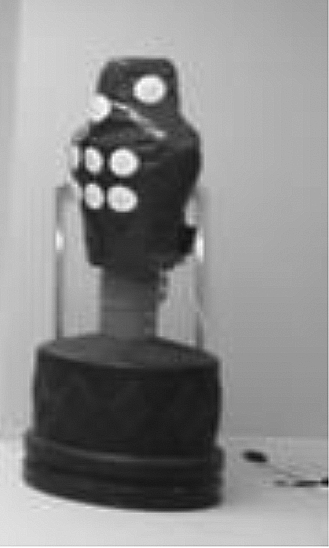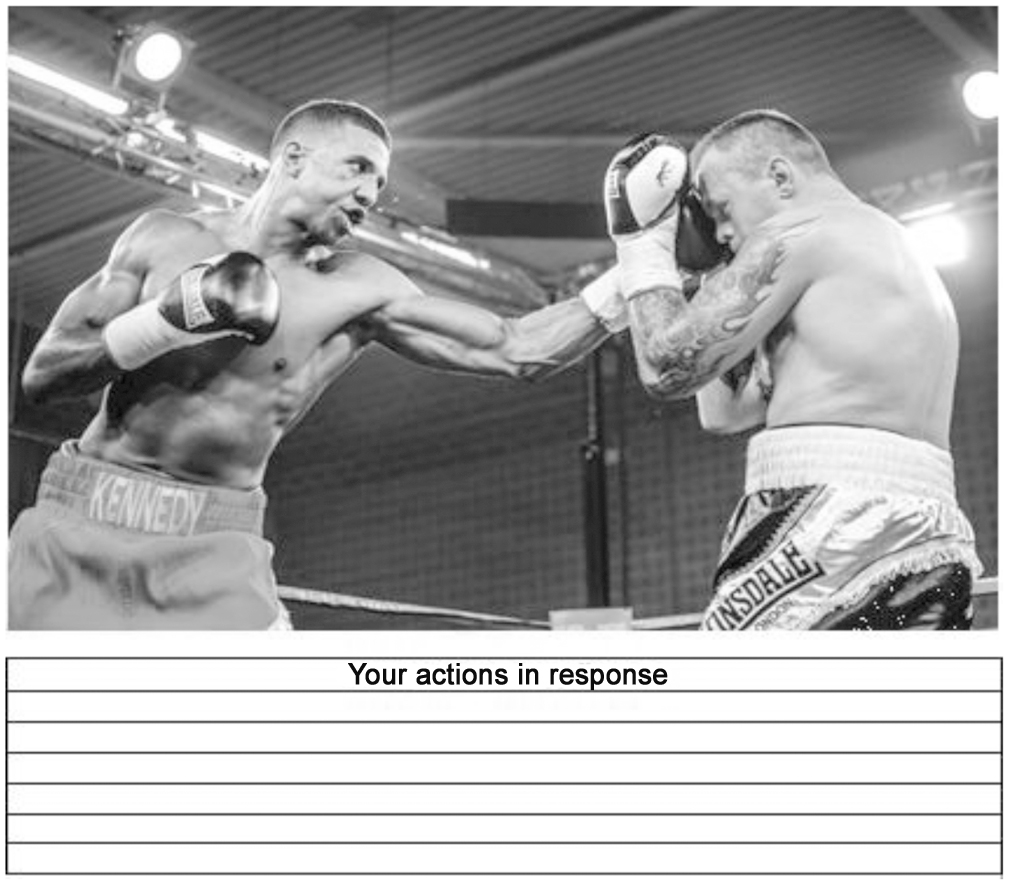Anticipatory responses to offensive actions in boxing
Фотографии:
ˑ:
A.O. Akopyan1
1All-Russian Research Institute of Physical Culture and Sport, Moscow
Keywords: anticipation, visual-motor response, higher nervous activity typology, offensive actions, boxing.
Background. Anticipation as a specific term and notion was introduced into psychology in 1880 by Wilhelm Maximilian Wundt, the German scientist [2] who interpreted it as the human ability to foresee the potential outcomes of an action before the latter is completed. There are a variety of manifestations of anticipation responses in many sports and particularly in the single combat sports where the motor action activating decisions should be taken in split seconds with their success being dominated by the natural (inborn) mobility of the nervous processes and the individual nervous-muscular coordination and perception levels. In addition, the anticipation responses are largely driven by the individual timing and pacing abilities and sensations of the efforts applied and spatial/ postural control skills.
P.K. Anokhin considered anticipatory reflexion as one of the key fundamentals of brain operation mechanisms that “supplies brain at the highest development stage with perfectly adequate information on the successive and repeated sets of phenomena taking place in the outside world”. In opinion of P.K. Anokhin, the anticipation responses may be classified into the following 5 levels depending on the motor action goals and decision-making criteria: sub-sensory, sensorimotor, perceptive level of notions and verbalized thinking levels [1].
Subject to consideration in this study were the sensorimotor level processes where anticipation may be interpreted as the practical expression of the spatial and temporal identification and proactive response to a signal; with understanding of the fact that the sport applications of anticipation are largely understudied at present [5, 3, 6, 4].
It should be noted that the modern science considers anticipation as the psycho-physiological ability that anybody may have and apply in a subconscious manner. There is an anticipatory competency, for instance, that manifests itself when a person finds answers to questions in an intuitive manner. It is the concrete situation that mobilizes the necessary information and practical experience stored in memory when a response is needed and dictates the way of response in fact. One more case in point is highly skilled chess players who automatically and intuitively respond to standard situations on the chessboard with the ease and precision that is far beyond the abilities of newcomers to the sport.
In single combat sports, athletes need to predict the opponent’s actions for success in every bout in particular and competitions on the whole. In waiting situations, the athlete has to forecast further flow of events by a sort of intuitive calculation of probabilities of one or another action by the opponent. When the actual tactical action of the opponent meets the expectations, the response will always be highly efficient and well-timed due to the so-called presetting. This is the reason why the training systems applied by highly skilled athletes give so high priority – in addition to the necessary physical, technical and tactical components – to the volitional and mental training tools and tests to explore individual thinking and responsiveness, probability-based foreseeing capacity, sensorimotor responses, anticipation ability and other relevant qualities.
Anticipation is always directly correlated with personality qualities. A few psychological studies have demonstrated that the personality improvement process taking place in many sports helps build up and excel the personal psychological processes as such to form a basis for the improved motor system control. This growing self-control ability depends on progress of the muscular and motor sensations and the nervous system operability training process. Furthermore, a success of anticipatory response depends on due timing of the process. In technical actions of volleyball players, for example, anticipation manifests itself in the ability to predict, watching the ball trajectory, the ball landing point and respond by timely positioning on the site, postural control and efficient teamwork. In alpine skiing, the skier applies anticipation within the frame of pre-programmed tactical actions; with such program being largely designed prior to the start based on direct perceptions of the downhill route with due contribution from the individual fast thinking and imagination abilities and the long- and short-term memory. Such preliminary programming is known to be an important contributor to the overall competitive success.
One of the top priority goals of a sport training process is to mobilize and advance the natural anticipation ability for it may be highly beneficial for the technical, tactical and mental fitness of the athlete and even pivotal for success. Many researchers, however, have noted that the sport theory is still in need of the studies to find the age-specific anticipation development trends and the relevant experiments to identify its sensitive developmental periods. Such data could be beneficial for the training systems designs being duly customized to the age-specific anticipation qualities and skills, otherwise the coaching teams can unlikely be efficient enough at the relevant education and training process stages in particular and the long-term training system on the whole.
Objective of the study was to explore anticipatory responses of elite boxers to offensive actions of their opponents.
Methods and structure of the study. We applied the NeuroSoft Psychological Test system to rate the subjects’ visual-motor responses and used the test data to analyse and profile the non-specific-modality visual-motor responses of the elite boxers. The tests were designed to rate the response-to-moving-object (RMO) and choice reaction time, followed by the subjects being broken down into the following three types based on the dominant CNS excitation processes: excitatory, balanced and inhibitory CNS types.
Study results and discussion. Based on the test data, 9 athletes (56%) were diagnosed with the dominant CNS excitatory processes; 4 athletes (25%) classified with the balanced CNS type, and 3 athletes (19%) with the inhibitory type.
The RMO test data were indicative of the timeliness and precision of the responses. Given in Table 1 hereunder are the RMO test data showing the timeliness and success rates of the responses versus the above dominant CNS function types.
Table 1. Elite boxers’ Response to Moving Object Test data (n=16)
|
Subjects classified by the CNS types |
Responses, % |
||
|
Precise |
Anticipatory |
Delayed |
|
|
9 (excitatory type) |
25 |
48 |
27 |
|
4 (balanced type) |
21 |
39 |
40 |
|
3 (inhibitory type) |
26 |
29 |
45 |
Having analysed the above data, one can find that 29% to 48% of the elite boxers, irrespective of the CNS function types, tend to respond in an anticipatory manner to the signal. To obtain additional substantiation for the finding, we tested the subjects’ specific-modality visual-motor responses using a boxing dummy figure made of special elastic material and fixed on a base via a springy mechanism. The dummy was equipped with light sensors to mark the points the boxer was required to punch in the test (see Figure 1). The test was designed to rate the time of specific response to the control signal, the response being largely driven by the automatic motor skills that in their turn mobilized the past motor experience of the athlete to help him act in a largely proactive manner.

Figure 1. Special boxing dummy figure used to rate the visual-motor responses of the subjects
The dummy punching tests provided the following elite boxers’ visual-motor response rates: simple and complex visual-motor response rates, with the complex test designed to offer 9 potential targets of which only one must be hit. The tests required every subject making 10 attempted attacks by 160 punches of which 48 (30%) were the punches made in advance of the signal for attack, i.e. these were anticipatory offensive actions. The test data analysis showed the elite boxers demonstrating high degrees of anticipation in the specific offensive actions i.e. often acting prior to the signal for attack.
A few preliminary studies gave the means to work out some basic approaches to the anticipatory response analysing in boxing sport. They were based on the boxer’s motor memory survey forms to analyse the individual motor skill stocks – as it is known that the higher is the motor reserve the more efficient are the anticipatory responses. The boxer’s motor memory survey form is given on Figure 2 hereunder. The test was designed to put the athletes under 10” time pressure in choosing the response.

Figure 2. Boxer’s motor memory survey form
Conclusion. The study found at least 6 response actions to 4 model situations that means that the elite boxers’ motor memory saves model responses to a variety of dynamic situations with the relevant counterattack options, and they form a basis for anticipatory actions in bouts. It should be noted that there is a high need for anticipation responsiveness mastering and developing methods and tools applicable both in boxing sport in particular and in single combat sports on the whole.
References
- Anokhin P.K. Filosofskie aspekty teorii funktsionalnykh sistem [Philosophical aspects of theory of functional systems]. Moscow, 1978, 399 p.
- Vundt V. Vvedenie v psikhologiyu [Introduction to Psychology] Moscow: KomKniga publ., 2007, 168 p.
- Lomov B.F., Surkov E.N. Antitsipatsiya v strukture deyatelnosti [Anticipation in the structure of activity]. Moscow, 1980, 279 p.
- Naumenko E.A. Orientiry intuitivnosti [Intuitiveness Landmarks]. Tyumen: Vector Book publ., 2000, 213 p.
- Sudakov K.V. Funktsionalnye sistemy [Functional systems]. Moscow: RAMS publ., 2011, 320 p.
- Surkov E.N. Antitsipatsiya v sporte [Anticipation in sport]. Moscow: Fizkultura i sport publ., 1982, 144 p.
Corresponding author: vniifk@yandex.ru
Abstract
Individual anticipatory abilities to counter the opponent’s offensive actions in boxing bouts have always been highly appreciated in boxing. Subject to our study were 16 elite boxers of middle-weight categories (60-75 kg) aged 22±2.3 years. The following methods were used in the study: NeuroSoft Psycho-test system to classify the subjects by the psychological types; and a special punch training system to rate the visual-motor responses. The study data and analyses were used to determine the athletes’ psychological types, rate the visual-motor responses and manifestations of their anticipatory responses.
The study found at least 6 response actions to 4 model situations that means that the elite boxers’ motor memory saves model responses to a variety of dynamic situations with the relevant counterattack options, and they form a basis for anticipatory actions in bouts. It should be noted that there is a high need for anticipation responsiveness mastering and developing methods and tools applicable both in boxing sport in particular and in single combat sports on the whole.




